is a faithful reconstruction of Wurm’s childhood home, except for the fact that the artist has compressed the house to a width of just over one metre. The installation features a typical 1970s detached family home with a pitched roof, the interior living quarters of which are decorated with accurate yet slender reproductions of the fixtures, furnishings and family photographs of the period. While a novel and amusing experience, is nonetheless wrought with intensely dark and disturbing undertones.
Erwin Wurm, Narrow House, Berlinische Galerie, 2016 // Photo: Amin Akhtar
As with many of Wurm’s previous bodies of work, it is the visitor’s own physical and psychological experiences within that truly bring the piece to life. The narrow confines of the space, particularly in the hallway, force the viewer to adapt both their body and their behaviour as they make their way through the installation. Torsos are turned sideways, shoulders become hunched and stomachs sucked in, in an attempt to navigate the space more comfortably. The psychological effects of being confined within such a narrow existence are born of those physically experienced: as the viewer adapts their body and behaviour to suit the narrow space, they become ‘narrow-minded’ in their way of thinking. Every movement is carefully controlled, the restriction of movement and limited space leaving little room (both literally and figuratively) for creativity or spontaneity. Almost oppressively stifling and claustrophobic, it is difficult to imagine as a site for the generation of free-flowing thought and an openness to new ideas.
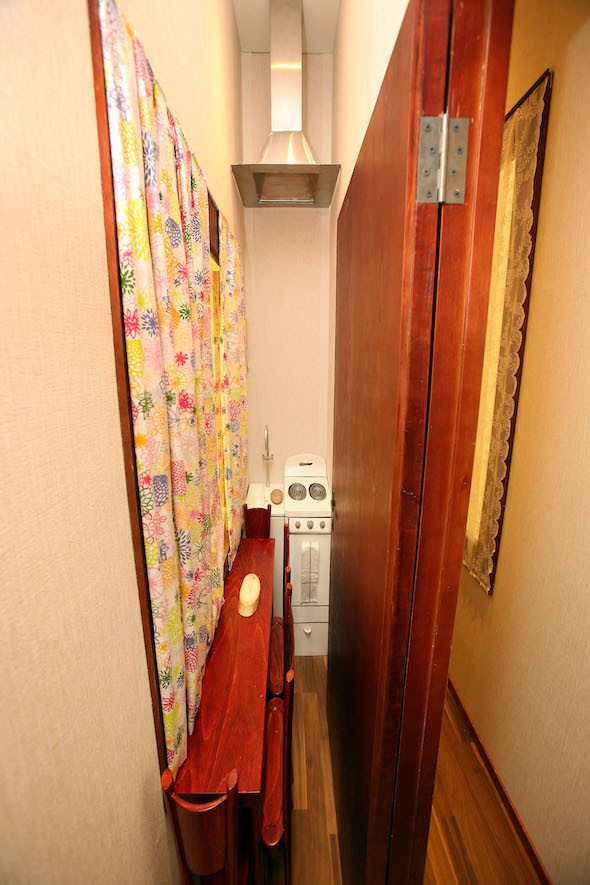
Erwin Wurm, Narrow House (Interior), Berlinische Galerie, 2016 // Photo: Amin Akhtar
In some ways, there is a discernible relief in leaving and returning to the airy, high-ceilinged gallery space. This sensation is not a disservice to the artwork, but rather the essential parting message of it. While we are used to the notion of our surroundings—especially our homes—becoming a product of our own influence, poignantly demonstrates how we can so easily become a product of our surroundings. Unpleasant questions arise, however, when we consider the effects of living in surroundings designed to produce a narrow and restrictive approach to life.
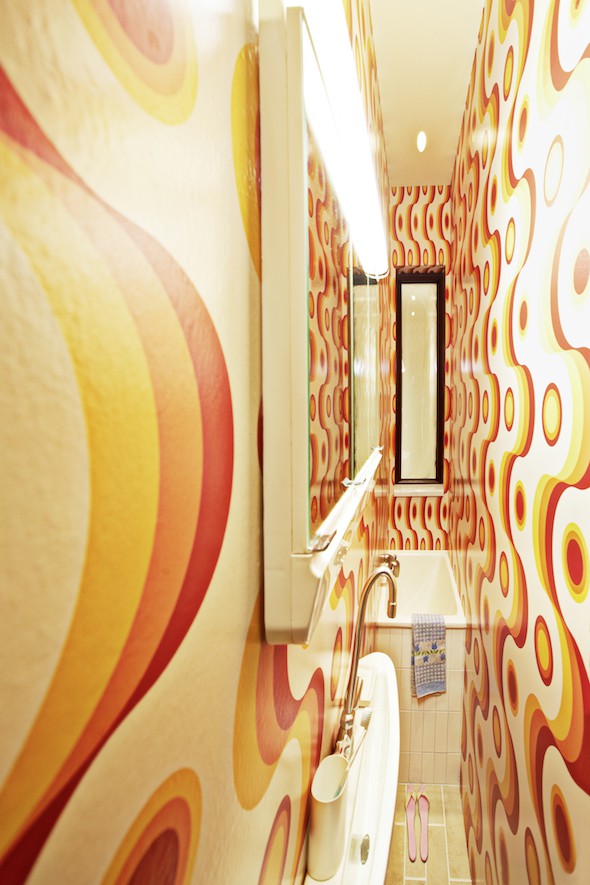
Erwin Wurm, Narrow House (Interior), 2015 // Photo: Studio Wurm
Perhaps the most frightening aspect of is that despite the obvious physical restrictions and discomfort of the space, the house contains everything that is necessary to reside within it. Fitted out with all the amenities of a regular home, all that is required is that the viewer adapt themselves to the space and life can, more or less, carry on as normal. The provincial prison that represents is dangerous precisely because it demonstrates how complacency and adaption to restriction and oppression breeds apathy and acceptance, so much so that we might one day not even question them as anything more than a way of life. Once restriction and control are regarded with ambivalence, freedom is truly lost. Given East Germany’s dark history of restrictive governance, surveillance and control, the normalisation of oppressive living circumstances is a particularly poignant theme in Wurm’s Berlin exhibition.
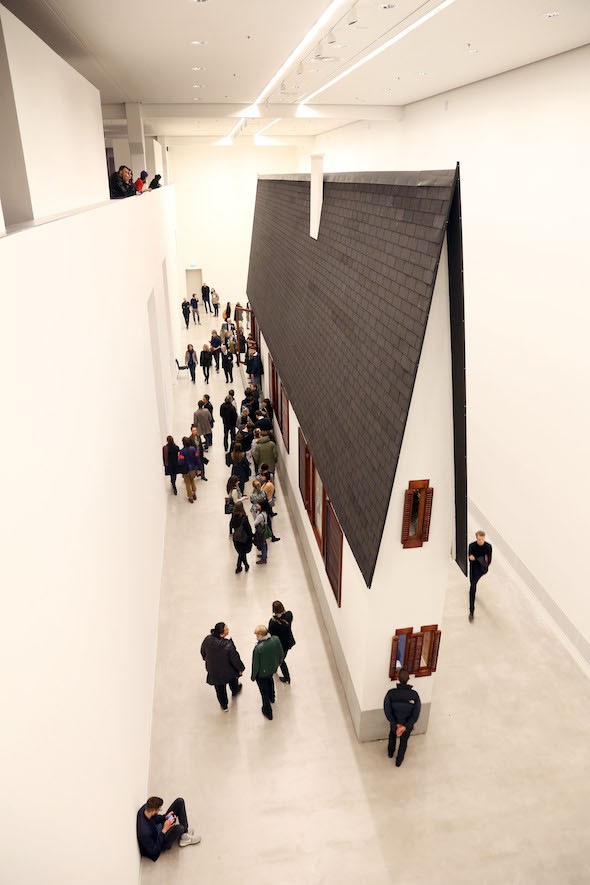
Erwin Wurm, Narrow House, Berlinische Galerie, 2016 // Photo: Amin Akhtar
Leading contemporary German photographer Heidi Specker has explored concepts surrounding architecture and the urban environment since the 1990s. Her current solo exhibition at the Berlinische Galerie features (‘In the Garden’), Specker’s most significant body of work to date. Exhibited in conjunction with her latest portraiture project, offers a visual exploration of abstracted glimpses of Berlin’s cityscape by interweaving scenes from both the urban environment and the natural landscape. The series features tightly cropped and isolated views of architectural elements juxtaposed with remnants of the natural world, including trees, puddles and piles of fallen snow. The fragmented images of are akin to the fleeting glimpses that commuters on a high-speed urban train might see during their daily journey through the city, these brief snapshots forming a collage that captures the very essence of the urban landscape.
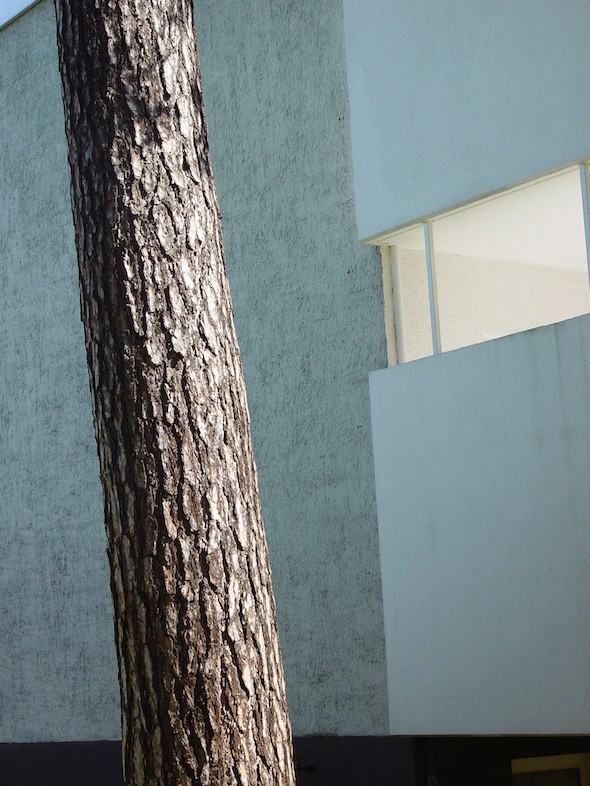
Heidi Specker, Im Garten Zehlendorf, 2003 // courtesy of BILD KUNST Bonn
The natural elements featured in bear a distinctly strange, almost artificial quality that renders them as almost alien vestiges of the wild within the highly developed urban setting that they reside in. However, Specker’s works are not an ode to the destruction of the natural world in the face of the unstoppable sources of the urban machine. While the built world at first appears permanent and unshakeable in contrast to the organic vulnerability of the natural world, the realities of the decay and eventual collapse of the urban landscape are clearly displayed. To accentuate the reality of simultaneous architectural and natural decay, Specker juxtaposes images of gnarled tree bark, rotting leaf matter and melting snow with those of weather-worn concrete, cracked asphalt and crumbling urban structures. In addition, Specker has used Photoshop to eliminate contrast and illuminate fine details that would otherwise be shadowed in darkness. While there is a distinctly artificial element to Specker’s photographs, they are soft, organic and devoid of harsh digital manipulation. The seemingly solid divide between industrial and natural elements has been blended smooth until the elements appear to be unified as one single picture plane.
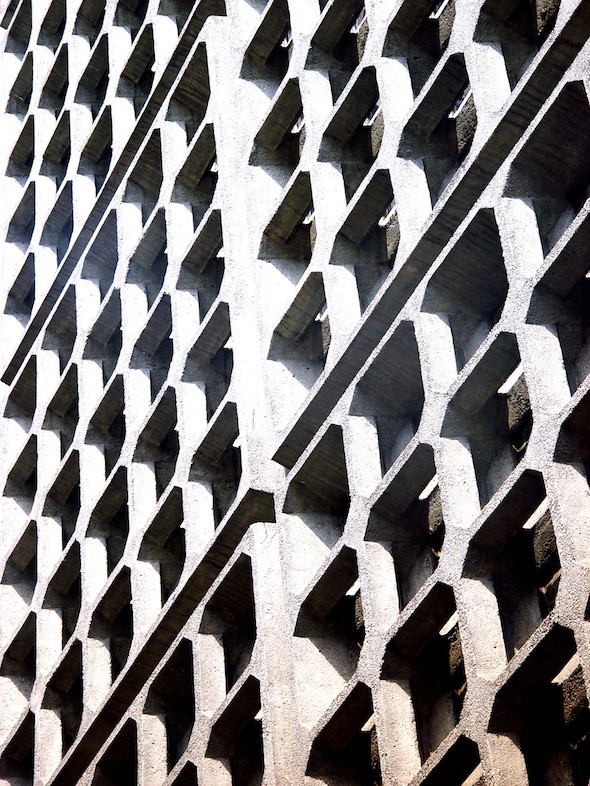
Heidi Specker, Im Garten Eiermann, 2003 // courtesy of VG BILD KUNST Bonn
The series is not the result of Specker’s impulse to divulge a narrative of the city, but instead results from her utilisation of abstraction to draw attention to the intersection between natural and built elements within the urban landscape. The tightly cropped and carefully controlled views remove the literal context and function of the architectural forms captured, allowing the viewer to focus on the form and aesthetic appeal. The familiar backdrop of the urban cityscape takes on a new visual language when it is isolated and removed from its original context. Large scale architectural elements become anonymous and vast, repetitious patterns. Through the process of abstraction, the familiar backdrop of the urban cityscapes takes on a new meaning. The structures depicted are not readily understood to be apartment complexes, high rises or office buildings, but instead appear in their purest visual concentration as surfaces, patterns and forms.
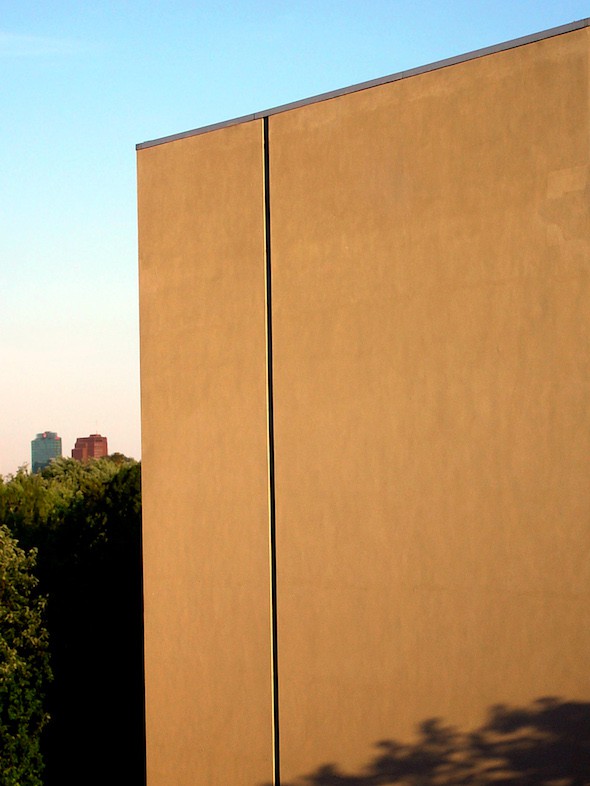
Heidi Specker, Im Garten Tiergarten, 2003 // courtesy of VG BILD KUNST Bonn
Exhibition
BERLINISCHE GALERIE
Erwin Wurm: Bei Mutti
Exhibition: May 15 – Aug. 22, 2016
Heidi Specker: IN FRONT OF (Photographs 2005/2015)
Exhibition: Mar. 1 – Jul. 11, 2016
Alte Jakobstraße 124-128, 10969 Berlin, click here for map








